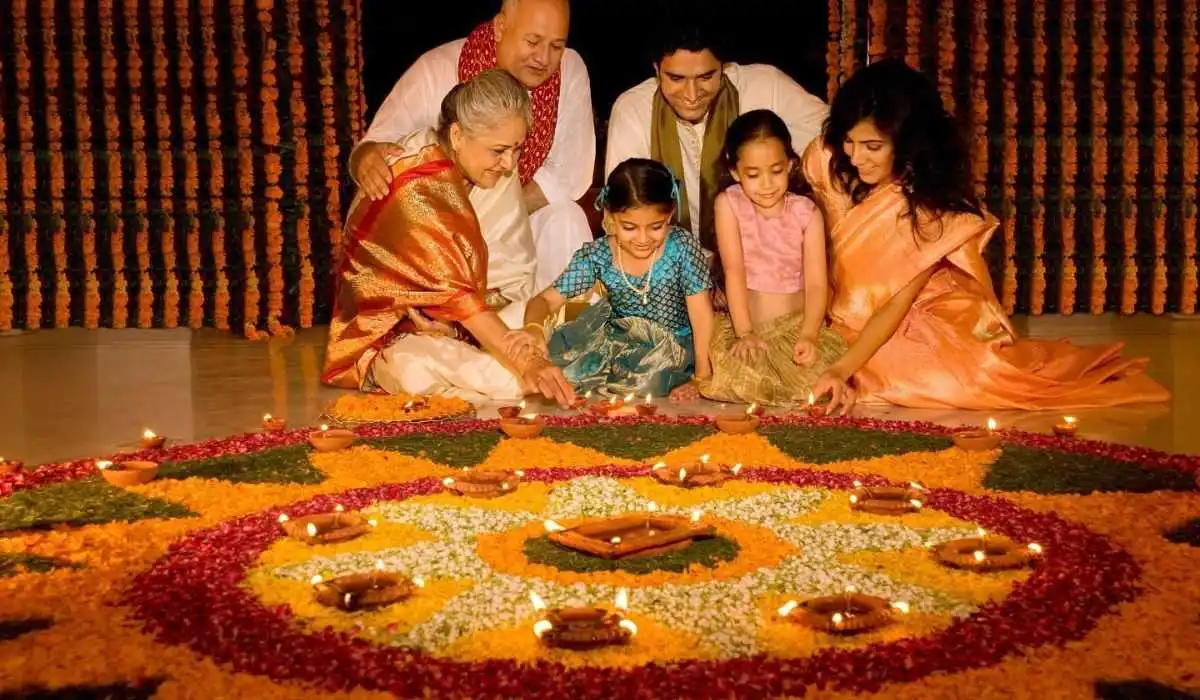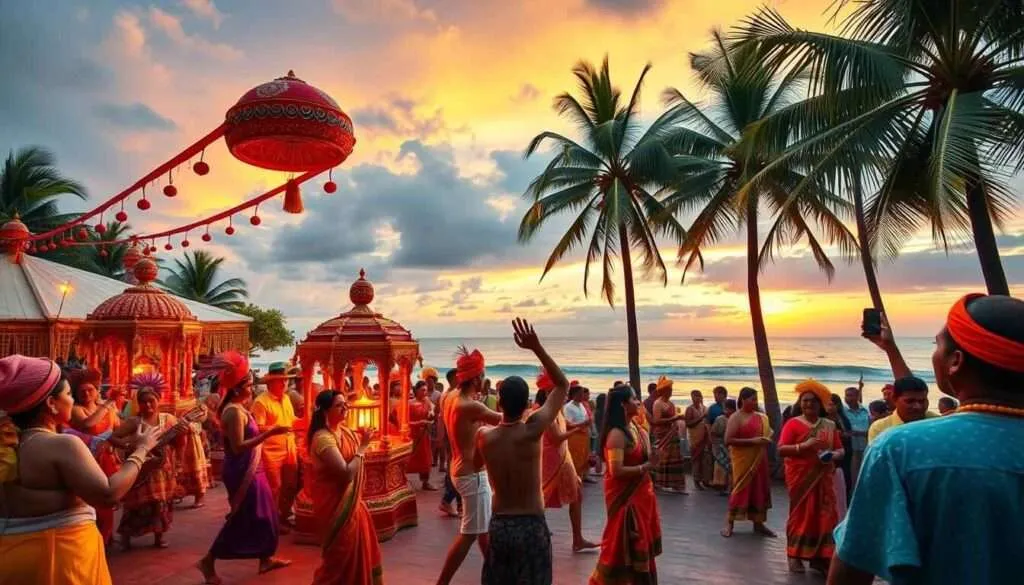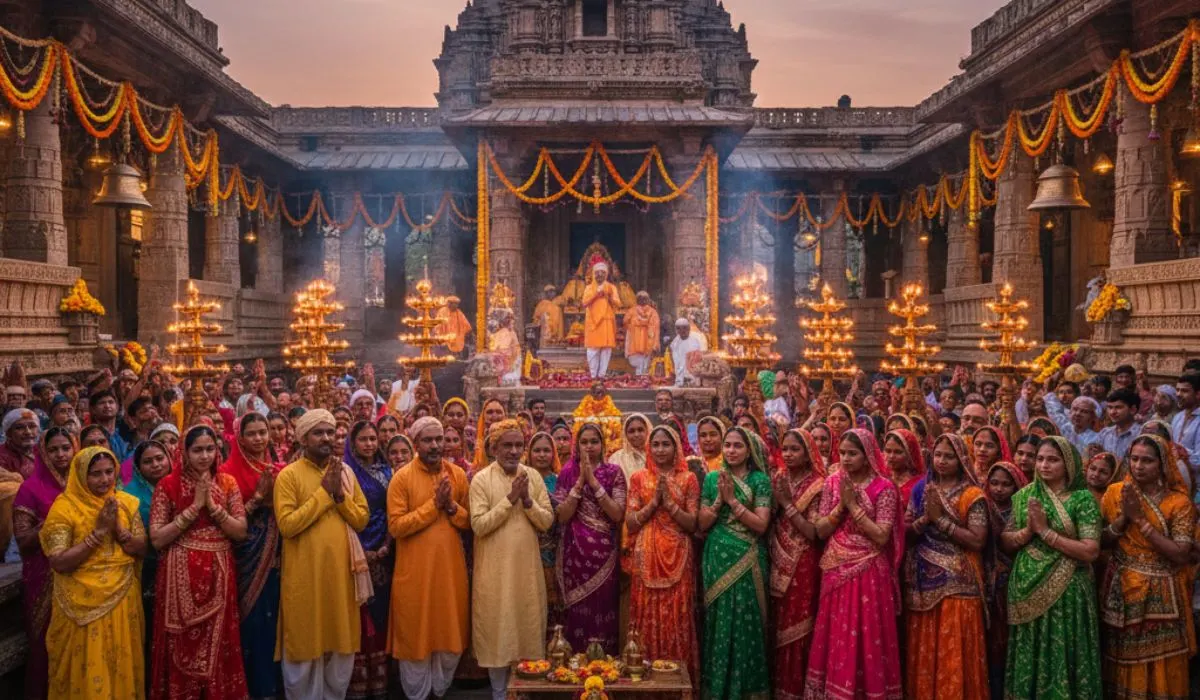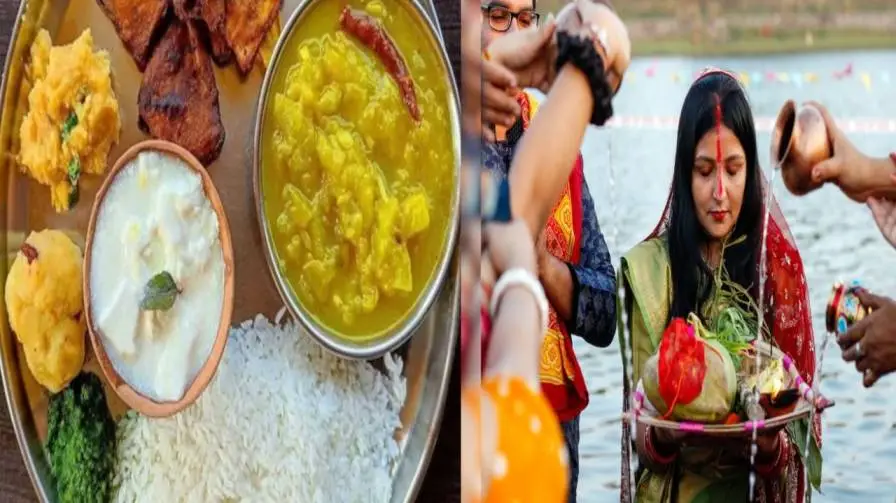Diwali or Deepavali is the huge festival of lights in India, which is the religious triumph of light over darkness, good over evil and knowledge over ignorance. It is a great spiritual and cultural event that unites the families during prayers, feasting and celebration, and has significant spiritual and cultural values in a Hindu, Jain, Sikh and Buddhist community.
Diwali will be celebrated on Monday, October, 20 in 2025 and the center of all the festivity will be Lakshmi Puja. Five days festival in Maharashtra follows the following schedule:
| Date in 2025 | Day | Festival | Key Rituals and Significance |
|---|---|---|---|
| Oct 18 | Saturday | Dhanteras | Day to worship Goddess Lakshmi and Lord Dhanvantari; buying gold, silver, or utensils is considered auspicious . |
| Oct 19 | Sunday | Naraka Chaturdashi | Also known as Choti Diwali; ritual Abhyang Snan (holy oil bath) is performed before sunrise . |
| Oct 20 | Monday | Lakshmi Puja (Main Diwali) | Goddess Lakshmi, Lord Ganesha, and Kuber are worshipped; diyas are lit to invite divine blessings . |
| Oct 21 | Tuesday | Govardhan Puja | Worship of Lord Krishna who lifted Govardhan Hill; celebrated with grand food offerings (Annakut) . |
| Oct 22 | Wednesday | Bhai Dooj | Celebration of the bond between brothers and sisters; sisters apply tilak on brothers' foreheads . |
History and Cultural context of Diwali
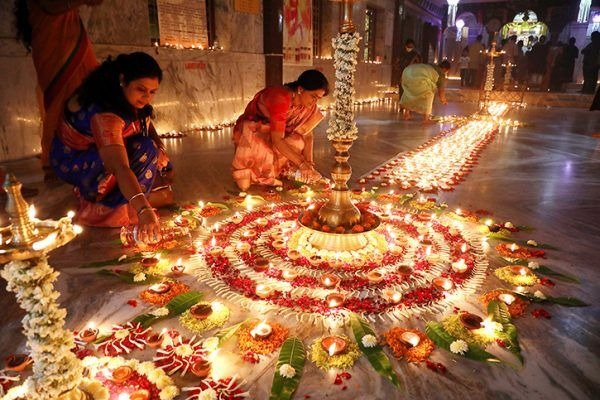
The history of Diwali is also very ancient in the scriptures of ancient India and it is probably an integration of the harvest festivals. The festival is aligned with occurrences of various religions, gods and other personalities in different parts of India.
- The coming back of Lord Rama: To most Hindus Diwali marks the coming back of Lord Rama to his kingdom of Ayodhya with his wife Sita and brother Lakshmana after 14 years of exile and their defeat of the demon king Ravana. Ayodhya was lighted with candles by the people so that they could see their way in the dark, as well as honor his coming back.
- Worship of goddess Lakshmi: Diwali is also closely identified with Goddess Lakshmi, the goddess of fortune and money. The principal day during Diwali is the day of new moon (Amavasya) on which the most significance is attributed to worshiping her.
- Other Religious Significance: Diwali is also the day when Lord Mahavira learnt to know everything and become enlightened (nirvana) to Jains. Among Sikhs, it is the commemoration of the day the Guru Hargobind was freed by Mughal imprisonment called Bandi Chhor Divas.
Also read :- Diwali 2025: Lights, Fireworks & Kaju Katli in Gujarat
Eco-Friendly Diwali is important to students
Envisioning a green Diwali among students is important in helping to make them environmentally responsible and also in the continuation of the of the light mood of the festival to future generations. Schools are one of the key actors in this transition since they are introducing sustainable practices in education.
- Environmental Consciousness: Conventional festivities using firecrackers and non-biodegradable decorations are a major contributor of air and noise pollution and create waste that damages the surroundings. Making the students aware of such effects makes them realize the need to switch to greener alternatives urgently.
- Hands-On Learning: At the schools, it is possible to organize workshops during which students will learn how to create eco-friendly decorations, how to produce natural rangoli color using materials such as turmeric and flowers and how to make gifts using something that can be recycled. This real-world manner of sustainability is interesting and memorable.
- Creating Sustainable Psychology: Understanding how to celebrate Diwali without harming the planet is a way to instil a life long desire of environmental responsibility. Such lessons will trigger students to become responsible citizens by making environmentally-friendly decisions even after the festival.
Regional Celebrations of Diwali Across India
While Diwali's core theme of "light over darkness" is universal, its celebrations reflect India's rich cultural diversity. This table highlights some distinctive regional variations :
| Region | Diwali Name(s) | Distinctive Features |
|---|---|---|
| Gujarat | Badhausar | Marks the end of the financial year; business accounts are closed and new books are sanctified (Chopda Pujan) . |
| Bengal & Odisha | Kali Puja | Coincides with the worship of the fierce form of Goddess Durga, Goddess Kali . |
| South India | Deepavali | Often centers on Lord Krishna's victory over the demon Narakasura; the main day of celebration is often Naraka Chaturdashi . |
| Punjab | Bandi Chhor Divas | Sikhs celebrate the release of Guru Hargobind Ji from Mughal imprisonment . |
| Andhra Pradesh | Divvela Panduga | Includes the legend of Narakaasura, intricate rangolis, oil lamps, and firecrackers . |
Eco-friendly Diwali Ideas, Safety and etiquettes
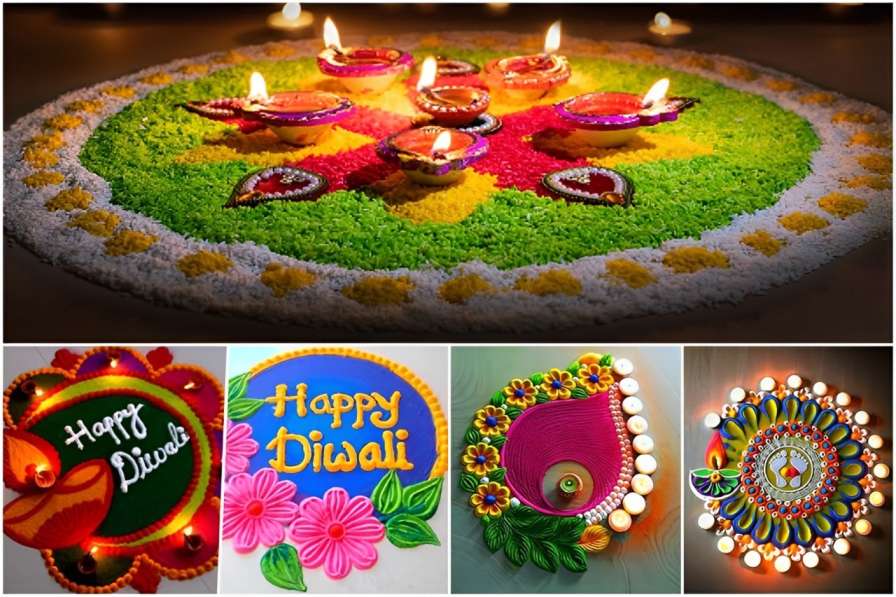
A very happy Diwali is a Diwali that is safe with your family, mindful of your people and kind to the earth.
Safety First
- Fire Safety: You should always light up the diyas and fireworks in open places and not close to flammable material such as curtains, wood and dry foliages. Have a bucket of water or fire quencher. Keep a watch over children near fire.
- Dressing: To avoid an accident, wear tight-fitting cotton clothes, rather than synthetic or flowing garments, around diyas or firecrackers.
- Pets: Firecrackers are traumatizing to pets. During the celebrations, keep your pets inside in a safe, quiet and secure place.
Environmental Etiquette
- Reduce Waste: Select biodegradable/reusable decorations. Do not use single-use plastic dishes and cups when hosting the guests. Once the celebration is over, ensure you dispose waste in a responsible manner; i.e. separate what can be recycled.
- Conserve Energy: You can adorn with low-energy using LED lights or solar powered lamps as opposed to the conventional electric lights to save a lot of energy.
- Mindful Celebrations: Don’t be inconsiderate when in the presence of aging residents, infants and those with health issues by avoiding loud fireworks and disposing debris after popping crackers.
Conclusion
It is not that the traditions of an eco-friendly Diwali in Maharashtra are to be sacrificed, but rather something that should be enhanced with responsibility and awareness. We celebrate the real spirit of the festival, the triumph of light and good, by opting to use clay diyas instead of plastic lights, natural rangolis instead of synthetic colors, and green crackers (or no crackers at all).
It is my vow on this Diwali to make a celebration safe to our families, thoughtful of our communities and kind on our planet. These sustainable practices will help to make sure that the Festival of lights remains joyful, prosperous, and a healthier environment in future generations. Best wishes of Shubh Diwali and Swachh Diwali.
FAQs on How to Celebrate an Eco-Friendly Diwali
1. What are some budget-friendly ideas for a green Diwali?
Making Diwali eco-friendly on a budget is easy. Use kitchen ingredients like rice flour, lentils, and spices for rangoli. Repurpose old jars and containers as decorative holders for diyas. Invite friends for a DIY sweets-making party instead of buying expensive packaged gifts .
2. How can I encourage my community to adopt eco-friendly practices?
Lead by example! Share your eco-friendly celebrations on social media. Talk to your Resident Welfare Association (RWA) about organizing a "gift swap mela" where residents can exchange unused items, reducing waste . You can also sensitize your neighbors about the impact of noise pollution on the elderly and pets .
3. What are some eco-friendly options for Diwali party favors?
Instead of plastic trinkets, consider gifting small potted plants, seed bombs, handmade soaps, or homemade treats in reusable containers. These gifts are thoughtful, sustainable, and often more appreciated .
4. Are there eco-friendly options for Diwali invitations?
Yes! The most sustainable option is to use digital invitations (e-invites) sent via WhatsApp or email. If you prefer physical cards, choose ones made from recycled paper or even plantable seed paper that can be buried to grow into herbs or flowers .
5. How can I make my Diwali puja more eco-friendly?
Use a biodegradable plate (like one made from leaves) for the puja samagri. Offer flowers and leaves that are locally available. After the puja, instead of immersing idols or materials in water bodies, which causes pollution, consider donating them for composting if possible.



